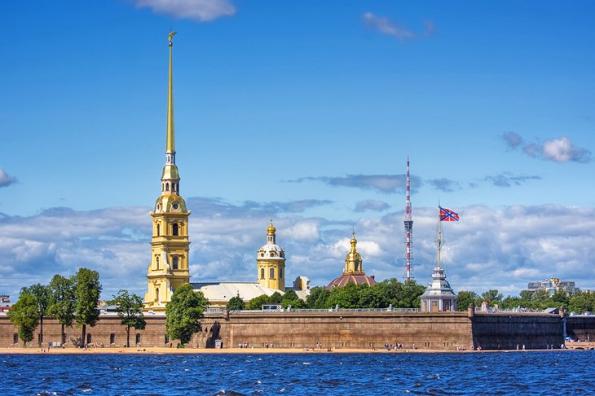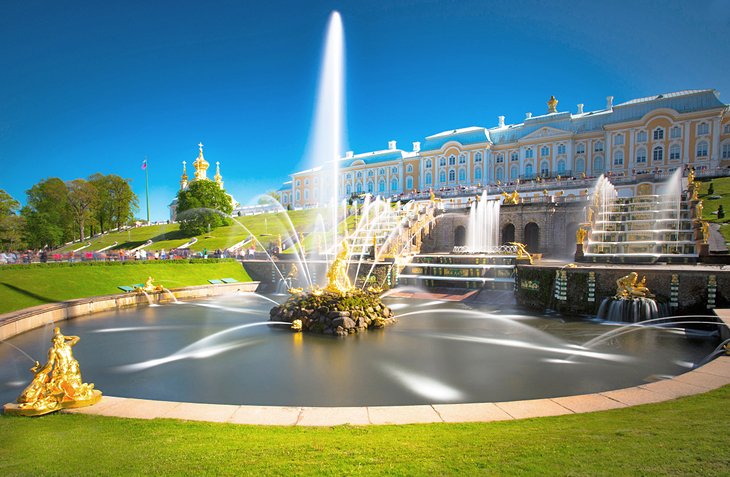The Hermitage Museum is so large that it is not possible to see it all in 1 day, and beautiful Nevsky Avenue, flanked by churches, opulent restaurants, and palaces, should be first stop for first-time visitors. Nevsky Avenue is also great place to watch people. The Peterhof Palace Complex is located outside the city. It takes a day excursion to see, yet it is essential and unmissable for anybody traveling to St. Petersburg. Look at our list of the best tourist attractions in St. Petersburg, regardless of whether you are already familiar with what you will be doing during your stay or if you are seeking more ideas on how to spend your time.
State Hermitage Museum
Established when Empress Catherine the Great began purchasing art pieces in the late 1700s, the museum wasn't formally open to the public until 1852. Around three million objects are housed at the Hermitage, making it the second-largest art museum in the world after the Louvre. The Hermitage was established in 1764 in Saint Petersburg, Russia.
Although the Hermitage is technically comprised of six different structures, the Winter Palace, which was the official residence of Russian emperors until 1917 and is a mammoth building with over 1,500 rooms, is where most of the museum's collections are kept. This is also the building that most people think of when they think of the Hermitage.
The museum has an extensive collection of Egyptian antiquities from the 19th century, and a hall devoted to prehistoric art. It works by French Neoclassical and Impressionist artists, Flemish Baroque artists, and Italian Renaissance masters. St. Petersburg, Russia's Hermitage, has the largest collection of paintings in the world, including a wide variety of styles and eras.
Peter and Paul Fortress
The Peter and Paul Fortress was once a fortified territory that aimed to protect the state against invasions launched from outside the country. It was first built in 1703 and underwent further expansion and alteration over forty years. During the Bolshevik revolution in the early 20th century, the castle was used as a jail and execution quarters. Even though the fortress was never really involved in any actual battle, it has a murky history behind it. It is now a section of the State Museum of the History of St. Petersburg where it may be found.
Many structures may be found within the walls of the castle, which are flanked on all sides by stunning gardens and winding stone pathways. The Peter and Paul Cathedral, which dates back to the 18th century and serves as the last resting place for Russian czars, is maybe the most well-known. Inside the confines of the fortress's walls may also be found prison cells, a city museum, and the building that houses the Saint Petersburg Mint, which was established in 1724 to produce coins and is still in operation today.

Palace Square
The vast open public area that serves as the primary city square in St. Petersburg is located directly in front of the Winter Palace. In the middle of the square is the Alexander Column, constructed in the 1830s out of a single block of red granite and now stands at a height of 47 meters. To honor the triumph against Napoleon, Alexander I decided to have it built and commissioned it.
The assassination of Tsar Alexander II in 1879 and the storming of the Winter Palace by Bolshevik troops in 1917, which marked the beginning of the Russian Revolution, both took place right on the square, which has been the site of many significant events in the history of Russia and the Soviet Union. Since then, the area has been used for various other marches and protests, including anything from military parades to honor Victory Day (the day that celebrates the conclusion of World War II) to New Year's Eve festivities.
Peterhof Palace

The Peterhof Palace complex dates back to the 18th century and is less than 30 kilometers from the heart of St. Petersburg. It is comprised of a collection of buildings, as well as various formal gardens and a total of 173 fountains that are supplied by underground springs. Peterhof was modeled after the Palace of Versailles, and it is perhaps most recognized for its "Grand Cascade," a collection of 64 fountains that can be seen on a series of terraces just outside the palace's front gate.

Sean William Mar 07, 2023
Things To Do In St. Petersburg

Daniel Jackson Mar 02, 2023
Solo Travel In Southeast Asia

Juliana Daniel Feb 24, 2023
Discover Your Ideal Adventure Itinerary for Asheville

Sean William Apr 10, 2023
What us islands can you fly to without a passport?

Juliana Daniel Feb 26, 2023
Everything About Costa Rica's Amazing Rivers

Sean William Feb 23, 2023
These 5 Popular Neighborhoods In Baltimore Crank Up The Charm

Daniel Jackson Mar 01, 2023
An Overview of Best Destinations to Spend Your Honeymoon

Sean William Feb 25, 2023